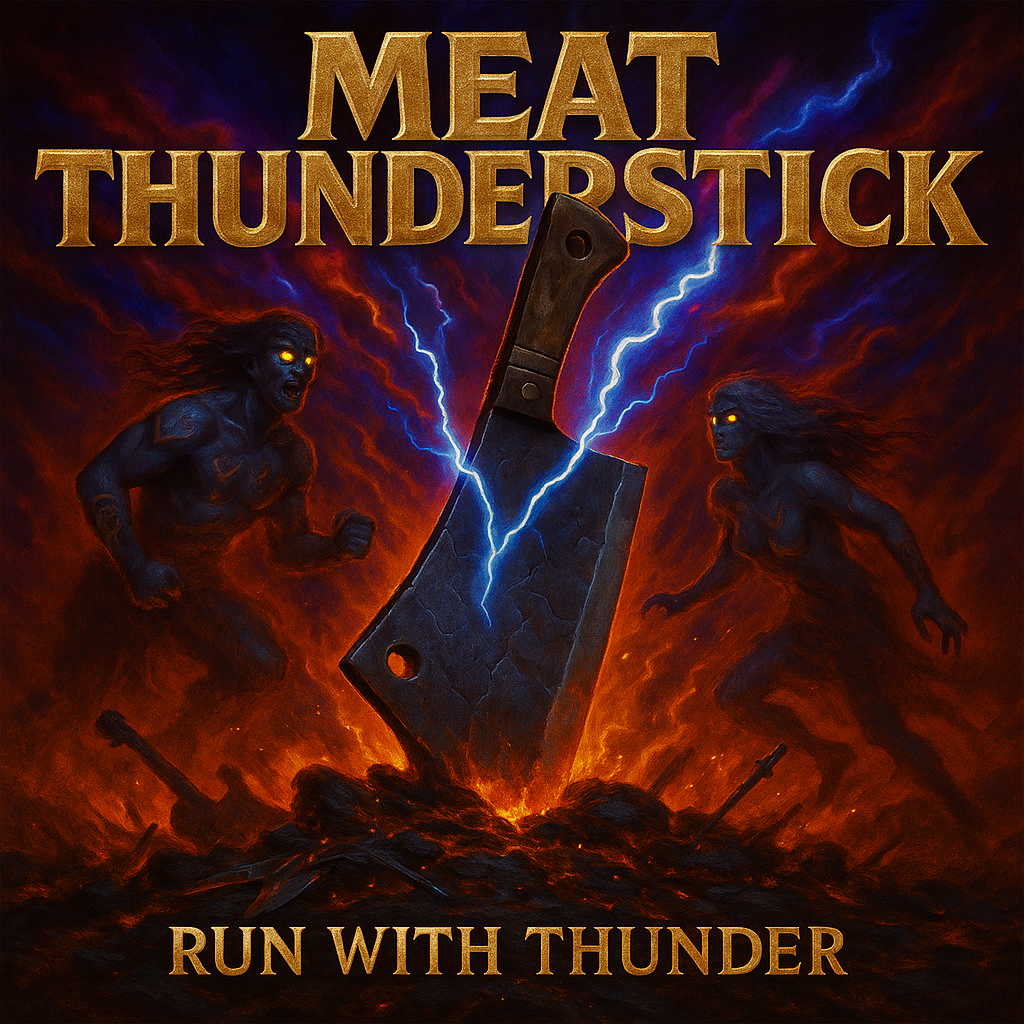About Me
Hi there and welcome to the world of Meat Thunderstick! I'm Devan Thomas – the father of Meat Thunderstick – or, at least, the one you can blame for it! I’m a 58-year-old Canadian with a lifelong love of music – all music – but especially heavy rock. For me, it has always been about the sound itself rather than the personalities behind it. Still, people often want to know the inspirations and influences behind the music, so here’s my story. And no – I have zero interest in being a “celebrity,” selling bathwater, or bottling farts. Let’s keep it about the music 😉.
Music was central to my life from the very beginning. My parents, both teachers, made sure of that. My mom taught music for much of her career, while my dad played guitar and piano by ear. The house was always alive with sound, and I was only three or four when I got my first record player. My early collection included Johnny Cash, Tennessee Ernie Ford, and Stompin’ Tom Connors. At the same time, I was taking piano lessons (not from my mom!) and working through Royal Conservatory books. In school, I was listening to Elvis, The Beach Boys, Neil Sedaka, The Guess Who, Bay City Rollers, the Rolling Stones and BTO, while still absorbing big band, choral, and hymnal music at home.
By grade 5 or 6, my musical horizons started to expand. A trip to the record store changed everything: I discovered Kiss’s “Alive” on 8-track, and from then on, I was hooked on heavy music. Soon after, Iron Maiden entered my life in a similar way, and they’ve been with me ever since. Around the same time, I traded Royal Conservatory scores for Kiss’s Alive II sheet music, forcing my piano teacher to adapt (much to their dismay).
High school was a whirlwind of music. I played trumpet in symphonic and stage bands, dabbled in Dixieland, wrote music and lyrics, and DJ’d school events. I explored PA systems, mixing, and lighting, while sneaking off to Toronto’s Yonge Street to scour the import bins at Sam the Record Man or A&A Records. My ears were wide open, and I loved nearly everything I found. I gravitated toward music that was both complex and thought-provoking – whether it was Baroque, Rush, jazz, Maiden, or anything in between.
When it came time for university, I faced a fork in the road: pursue music seriously or head into academics. Despite getting into music programs, I chose the latter, maybe knowing I lacked the drive to master a single instrument. I loved playing in bands and creating soundscapes more than striving for virtuoso performance. In Toronto, I stayed connected – renting keyboards, catching live shows, and tinkering with synths like Korgs – but music became more of a passion alongside my academic and career journey.
That journey led to a 30+ year career in engineering – not the recording kind, but the kind that designs and builds infrastructure. Music never left, though. Now, with more time and a little less work on my plate, I’ve been able to bring Meat Thunderstick to life. These days, I bang out riffs on guitar (badly), run a Boss 25 pedal through a 10-watt Marshall, and lay down tracks on a Yamaha MO8 synthesizer – the backbone of much of Meat Thunderstick’s sound.
So here we are: a lifetime of influences, experiences, and noisy passion distilled into this project. Thanks for listening, and I hope you enjoy the ride as much as I’ve enjoyed putting it together.
The songs of Meat Thunderstick echo those same crossroads of my life—youthful energy, hard choices, and the grit to keep moving forward. If you listen closely, you’ll hear not just heavy riffs but the stories, struggles, and sparks that shaped me along the way.
